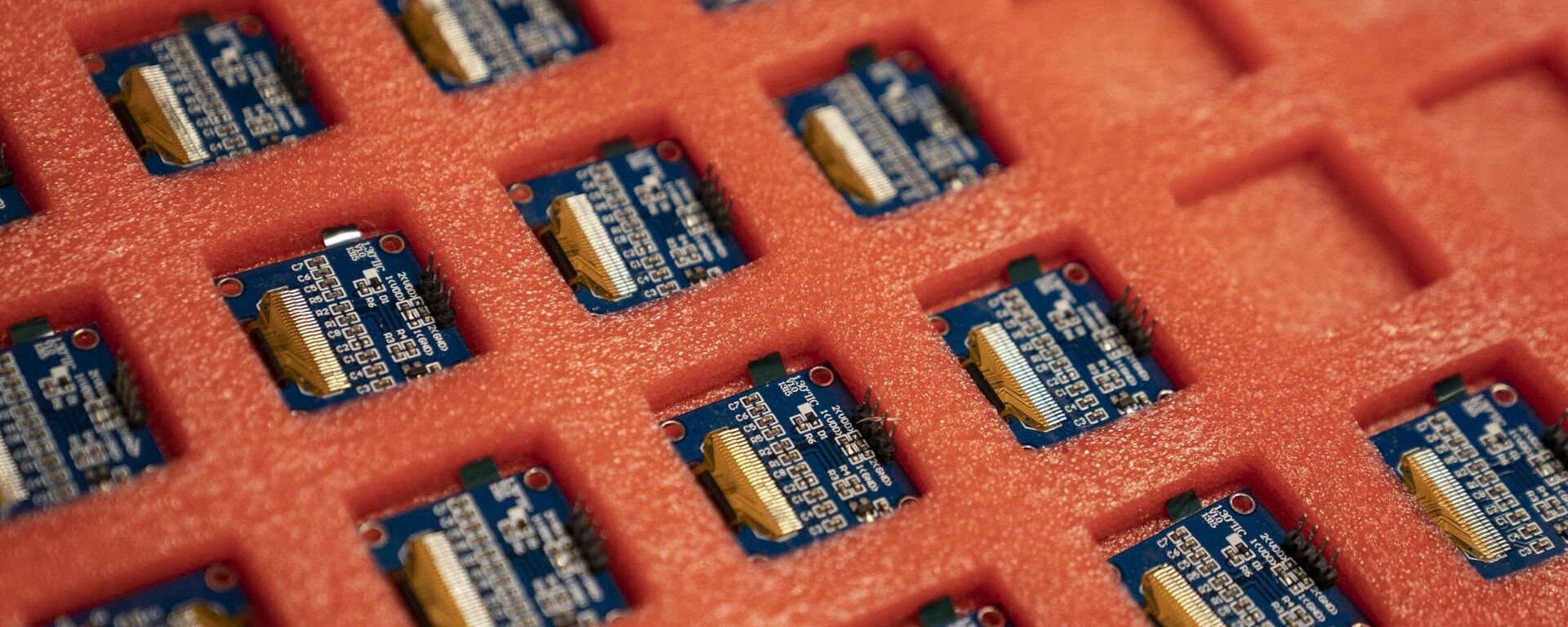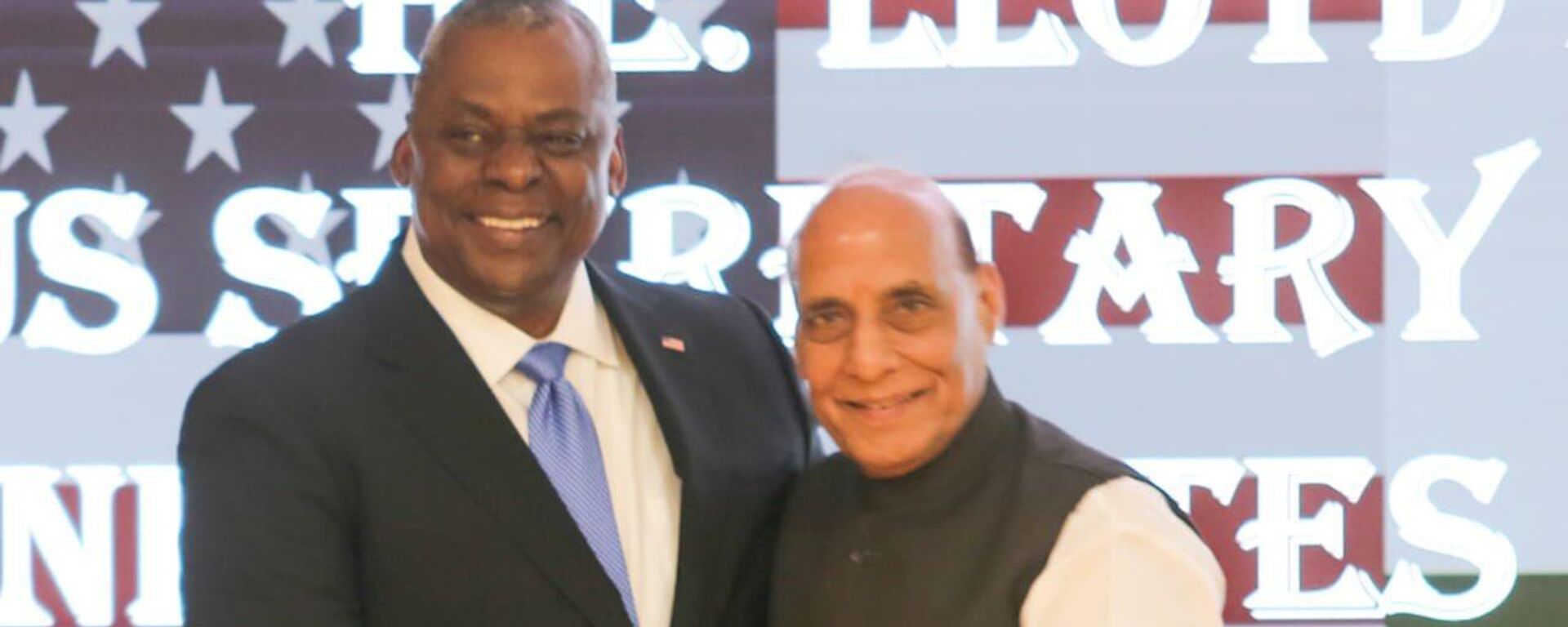https://sputniknews.in/20230622/nothing-cutting-edge-about-us-defense-tech-thats-being-shared-with-india-analyst-2619389.html
Nothing ‘Cutting-Edge’ About US Defense Tech That’s Being Shared With India: Analyst
Nothing ‘Cutting-Edge’ About US Defense Tech That’s Being Shared With India: Analyst
Sputnik India
There is "nothing cutting-edge” about American defense technologies and products which Washington is sharing with New Delhi.
2023-06-22T18:14+0530
2023-06-22T18:14+0530
2023-06-22T18:14+0530
defenсe news
india
us
mq-9b reaper
lca tejas
narendra modi
joe biden
indian ocean
us air force
indian air force (iaf)
https://cdn1.img.sputniknews.in/img/07e7/06/16/2620084_0:173:3025:1875_1920x0_80_0_0_9d2b7c63ebcf1d20a3a07e9c195971d6.jpg
There is "nothing cutting-edge” about American defense technologies and products which Washington is sharing with New Delhi, a leading Indian defense analyst has told Sputnik.Pravin Sawhney, a critically-acclaimed author and the editor of Force Magazine, said that the “Americans have been sharing little in order to make Indians happy”.“Of course, India is a reluctant partner,” he added, noting New Delhi’s public commitment to its policy of strategic autonomy.Sawhney discussed three major India-US defense deals and agreements—the manufacturing of GE414 jet engines, government-to-government deal for acquisition of MQ-9 "Reaper" drones by India and the initiative on Critical and Emerging Technologies (iCET).GE414 Jet Engine DealIndia, which operates one of the biggest fighter jet fleets in the world, has been seeking access to fighter jet engine technology to domestically manufacture engines.Sawhney, however, reckoned that it was still “uncertain” if India would be able to receive technology from the American company, despite of “hyped” optimism in sections of Indian media.He added that only a “certain percentage of this know-how and know-why” will be shared with India, but even that would take upto several years.MQ-9 'Reaper' DronesThe White House has said that PM Modi and President Biden will announce a government-to-government deal for the purchase of General Atomics MQ-9 "Reaper" drones, a deal valued at over $3 billion.Sawhney, however, expressed concern that the technology behind these drones came out in 2007 and is already “outdated”.A drone essentially consists of three components—sensor, processor (which processes the information captured by a sensor) and the payload.He said that all the information acquired by the drone won’t be “real-time”, whether it’s deployed at India-China border or in the Indian Ocean Region (IOR).Sawhney noted that there are already widespread concerns in the American military establishment about the effectiveness of these drones.On iCETUS President Joe Biden and Prime Minister Modi announced the India-U.S. Initiative on Critical and Emerging Technologies (iCET) last May to “forge closer linkages” between government, academia and industry of the two countries in areas such as AI, quantum computing, 5G/6G, biotech, space and semiconductors, as per a statement from Indian Prime Minister’s Office (PMO).A “roadmap” on iCET was announced during the visit of Biden’s National Security Advisor (NSA) Jake Sullivan to New Delhi, where he also held “restricted” discussions with Modi’s NSA Ajit Doval.Sawhney underlined that the technologies which have already been “incubated” are part of the arrangement.He noted that despite the thrust on private sector role, the initiative was being piloted by defense departments of the two countries.India ‘Hedging its Bets’ in view of Differences with China, Sawhney SaysWhile noting India’s longstanding commitment to the policy of strategic autonomy, Sawhney questioned the logic of Prime Minister Narendra Modi’s government in signing the “foundational” pacts with the US --Basic Exchange and Cooperation Agreement (BECA), Communications Compatibility and Security Agreement (COMCASA) and the Logistics Exchange Memorandum of Agreement (LEMOA).Along with the General Security of Military Information Agreement (GSOMIA) which New Delhi signed in 2002, the four pacts constitute the “foundational pacts” that any country must sign in order to get access to advanced American technology.The expert said that New Delhi has so far been wary of aggravating its border differences with China, which Washington acknowledges as its “most consequential” security challenge.Sawhney reckoned that the US was keen on enlisting New Delhi’s help because of its geography as it was the only Quad partner which sits astride the Indian Ocean.
https://sputniknews.in/20230622/india-set-to-chip-away-at-growing-semi-conductor-nationalism-of-us--2607676.html
https://sputniknews.in/20230608/sl-kanthan-us-defense-systems-a-bad-bet-for-india-2388422.html
india
us
indian ocean
indo-pacific
Sputnik India
feedback.hindi@sputniknews.com
+74956456601
MIA „Rossiya Segodnya“
2023
Dhairya Maheshwari
https://cdn1.img.sputniknews.in/img/07e6/0c/13/138962_0:0:641:640_100x100_80_0_0_2cb44360dbcdf6d84bf4b299cd045917.jpg
Dhairya Maheshwari
https://cdn1.img.sputniknews.in/img/07e6/0c/13/138962_0:0:641:640_100x100_80_0_0_2cb44360dbcdf6d84bf4b299cd045917.jpg
News
en_IN
Sputnik India
feedback.hindi@sputniknews.com
+74956456601
MIA „Rossiya Segodnya“
Sputnik India
feedback.hindi@sputniknews.com
+74956456601
MIA „Rossiya Segodnya“
Dhairya Maheshwari
https://cdn1.img.sputniknews.in/img/07e6/0c/13/138962_0:0:641:640_100x100_80_0_0_2cb44360dbcdf6d84bf4b299cd045917.jpg
jet engine deal, jet engine india, modi us visit, modi in us, reaper drones, quad, india us defense deal, india us quad, india us icet, india us relations, india us trade, india china us, india china border, india china news
jet engine deal, jet engine india, modi us visit, modi in us, reaper drones, quad, india us defense deal, india us quad, india us icet, india us relations, india us trade, india china us, india china border, india china news
Nothing ‘Cutting-Edge’ About US Defense Tech That’s Being Shared With India: Analyst
American firm GE Aerospace signed a MoU with India’s state-backed Hindustan Aeronautics Limited (HAL) on Thursday to produce F414 fighter jet engines for the Indian Air Force’s (IAF) Light Combat Aircraft (LCA) Mk2 program.
There is "nothing cutting-edge” about American defense technologies and products which Washington is sharing with New Delhi, a leading Indian defense analyst has told Sputnik.
Pravin Sawhney, a critically-acclaimed author and the editor of Force Magazine, said that the “Americans have been sharing little in order to make Indians happy”.
“The whole idea is to build up India over a period of time so that it plays a combat role in the Indian Ocean Region (IOR),” Sawhney remarked, dwelling on possible American motives in enhancing defense cooperation with India.
“Of course, India is a reluctant partner,” he added, noting New Delhi’s public commitment to its policy of strategic autonomy.
Sawhney discussed three major India-US defense deals and agreements—the manufacturing of
GE414 jet engines, government-to-government deal for acquisition of
MQ-9 "Reaper" drones by India and the initiative on
Critical and Emerging Technologies (iCET).
India, which operates
one of the biggest fighter jet fleets in the world, has been seeking access to fighter jet engine technology to domestically manufacture engines.
Sawhney, however, reckoned that it was still “uncertain” if India would be able to receive technology from the American company, despite of “hyped” optimism in sections of Indian media.
“They intend on transferring the assembly of the engine. It is not really the transfer of technology. It will not involve the transfer of technology (ToT). The know-how and the know-why will not be shared,” the defense expert stated.
He added that only a “certain percentage of this know-how and know-why” will be shared with India, but even that would take upto several years.
“There is also uncertainty over how much the Americans will share even after a couple of years,” the expert remarked.
The White House has said that PM Modi and President Biden will announce a government-to-government deal for the purchase of General Atomics MQ-9 "Reaper" drones, a
deal valued at over $3 billion.
Sawhney, however, expressed concern that the technology behind these drones came out in 2007 and is already “outdated”.
“It has two major problems. Firstly, it is a very slow-moving unmanned aircraft. The other problem is that it needs a lot of pilots on the ground. It doesn’t have the capability of sensors doing the fusion onboard the drone,” he explained.
A drone essentially consists of three components—sensor, processor (which processes the information captured by a sensor) and the payload.
“But this drone only has a sensor, which means it requires a lot of people on the ground to pilot the aircraft and take all the feeds from the sensors,” Sawhney said.
He said that all the information acquired by the drone won’t be “real-time”, whether it’s deployed at India-China border or in the Indian Ocean Region (IOR).
Sawhney noted that there are already widespread concerns in the American military establishment about the effectiveness of these drones.
US President Joe Biden and Prime Minister Modi announced the India-U.S. Initiative on Critical and Emerging Technologies (iCET) last May to “forge closer linkages” between government, academia and industry of the two countries in areas such as AI, quantum computing, 5G/6G, biotech, space and semiconductors, as per a statement from Indian Prime Minister’s Office (PMO).
A “roadmap” on iCET was announced during the visit of Biden’s National Security Advisor (NSA) Jake Sullivan to New Delhi, where he also held “restricted” discussions with Modi’s NSA Ajit Doval.
Sawhney underlined that the technologies which have already been “incubated” are part of the arrangement.
He noted that despite the thrust on private sector role, the initiative was being piloted by defense departments of the two countries.
“Therefore, since the MoDs are involved, we are looking at a very low level of interaction and we are looking at just about minimal help so that we are good enough to be part of their defense network,” Sawhney explained.
India ‘Hedging its Bets’ in view of Differences with China, Sawhney Says
While noting India’s longstanding commitment to the policy of strategic autonomy, Sawhney questioned the logic of Prime Minister Narendra Modi’s government in signing the “foundational” pacts with the US --Basic Exchange and Cooperation Agreement (BECA), Communications Compatibility and Security Agreement (COMCASA) and the Logistics Exchange Memorandum of Agreement (LEMOA).
Along with the General Security of Military Information Agreement (GSOMIA) which New Delhi signed in 2002, the four pacts constitute the “foundational pacts” that any country must sign in order to get access to advanced American technology.
“Why would the Modi government sign the four (other three) foundational agreements if the idea was to play a non-military role,” questioned Sawhney.
The expert said that New Delhi has so far been
wary of aggravating its border differences with China, which Washington acknowledges as its “most consequential” security challenge.
Sawhney reckoned that the US was keen on enlisting New Delhi’s help because of its geography as it was the only Quad partner which sits astride the Indian Ocean.
“We are reluctant but we are hedging our bets. At a time when big changes are happening, it is a dangerous game to hedge our bets,” Sawhney warned.




